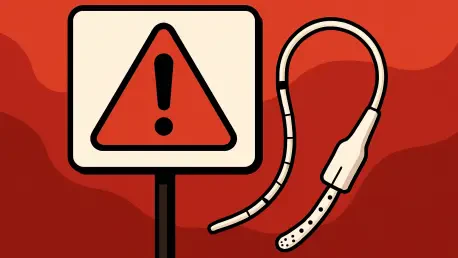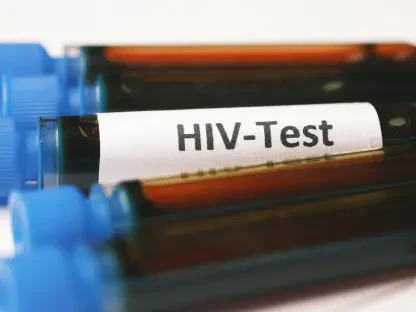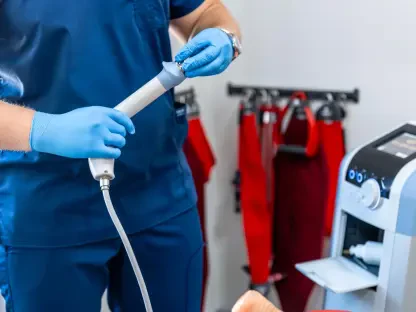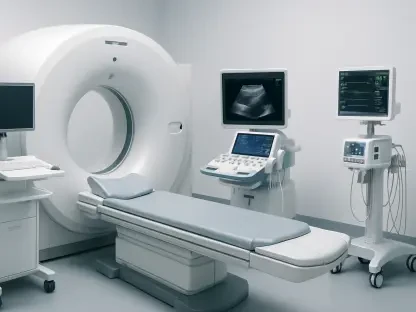What if a tool meant to heal a racing heart could instead pose a hidden danger? In the high-stakes world of cardiac care, a startling alert from the U.S. Food and Drug Administration (FDA) has thrust Abbott’s TactiFlex Ablation Catheter into the spotlight. Used to treat atrial fibrillation—a condition affecting over 5 million Americans—this device promises life-changing relief through minimally invasive procedures. Yet, a rare but serious flaw has emerged, prompting urgent warnings to doctors and patients alike. This unfolding story reveals the delicate balance between cutting-edge innovation and the unrelenting demand for safety in medical technology.
A Wake-Up Call for Cardiac Care
The significance of this FDA alert cannot be overstated. Issued on September 19, with a follow-up just days later on September 22, the warning targets a device central to treating atrial fibrillation, a heart rhythm disorder that can lead to stroke or heart failure if left unchecked. The TactiFlex Catheter, developed by Abbott, has been hailed as a breakthrough for its precision in restoring normal heartbeats. However, the possibility of catastrophic failure during surgery has raised alarms, underscoring the critical need for vigilance in an era where technological advancements often outpace safety assurances.
This issue transcends a single product, touching on broader concerns about how medical devices are designed, tested, and deployed. With millions relying on such tools to manage chronic conditions, the stakes are personal and profound. Patients trust their physicians, and physicians trust their equipment—when that trust is shaken, the ripple effects reach into operating rooms and living rooms across the nation. This alert serves as a reminder that even the most promising innovations must be matched by rigorous oversight.
The Heart of the Problem
At the core of the concern lies a chilling defect: the catheter’s tip can detach during procedures. Abbott has documented three cases where this occurred inside patients, a statistic that, while small, carries enormous weight given the potential consequences. If a detached tip migrates within the body, it could trigger devastating outcomes like stroke, respiratory distress, or blocked blood flow. The FDA has classified this as a high-risk issue, emphasizing the gravity of even a rare malfunction in such a critical context.
Beyond the incidents during use, Abbott identified 29 additional reports of damaged tips, most detected before reaching patients. The company points to improper handling during removal from packaging as the primary culprit, revealing a gap not just in design but in practical application. These numbers, though limited, highlight a vulnerability in a device meant to be a lifeline, prompting questions about whether the issue stems from user error, packaging flaws, or an inherent weakness in the catheter itself.
Responses from the Frontlines
The FDA has taken a firm stance, urging healthcare providers to stay alert for any signs of trouble during procedures involving the TactiFlex Catheter. This proactive communication aims to prevent even a single adverse event, reflecting the agency’s commitment to patient safety over complacency. While no serious injuries or deaths have been linked to the detachments as of early September, the potential for harm keeps this issue at the forefront of regulatory focus.
Abbott, for its part, has responded with transparency and action. A company spokesperson stated in a customer letter, “Abbott is dedicated to patient safety and is addressing this through enhanced instructions and packaging improvements.” This pledge is backed by concrete steps, though some cardiologists remain cautious, noting that undetected complications could still lurk in complex surgeries. Medical device experts echo this sentiment, stressing that while no harm has been reported, the risk of future incidents demands immediate and lasting solutions.
Navigating the Risks in Practice
For healthcare professionals, the path forward involves meticulous attention to detail. Abbott has issued updated guidelines, instructing users to inspect the catheter and its packaging for damage before every procedure. New visual aids with annotated images demonstrate proper removal techniques to avoid stressing the delicate tip. Additionally, a redesigned packaging tray is being introduced to reduce the likelihood of pre-use damage, a practical measure aimed at tackling the root cause.
Patients, meanwhile, face the challenge of navigating uncertainty. Those scheduled for ablation procedures should engage in candid conversations with their cardiologists about whether this device will be used and what safeguards are in place. Hospitals and clinics are also encouraged to reinforce training programs, ensuring staff are well-versed in the updated protocols. These combined efforts aim to maintain confidence in a treatment that, despite its risks, remains a vital option for many battling atrial fibrillation.
Innovation Amidst Challenges
Even as Abbott addresses the current safety concerns, the company’s vision for the future of cardiac care remains ambitious. Development of the TactiFlex Duo Ablation Catheter, a next-generation device combining pulsed field and radiofrequency energy, is progressing rapidly. With clinical trials already underway and enrollment completed ahead of schedule, an international launch is targeted for 2026, signaling confidence in the broader potential of this technology.
This forward momentum, highlighted by Abbott’s leadership during a recent earnings call, illustrates a dual focus: resolving immediate issues while pushing the boundaries of what ablation therapy can achieve. For patients and providers, this balance offers hope that today’s setbacks can inform tomorrow’s successes. The journey of the TactiFlex line underscores a universal truth in medicine—every advancement must be tempered by an unwavering commitment to those it serves.
Reflecting on a Critical Moment
Looking back, the FDA’s alert on Abbott’s TactiFlex Catheter marked a pivotal chapter in the ongoing dialogue between innovation and safety. The rare instances of tip detachment, though free of serious harm, exposed vulnerabilities that demanded swift action from both regulators and the manufacturer. Abbott’s response, coupled with the FDA’s vigilance, set a precedent for how such challenges are confronted with transparency and urgency.
As this issue unfolded, it became clear that the path ahead rested on collaboration. Healthcare providers adapted to new guidelines, patients sought clarity from their doctors, and the industry itself recalibrated to prioritize safety without stifling progress. Moving forward, the lessons learned must guide the development of safer devices, ensuring that trust in medical technology remains unbroken for the millions who depend on it.









